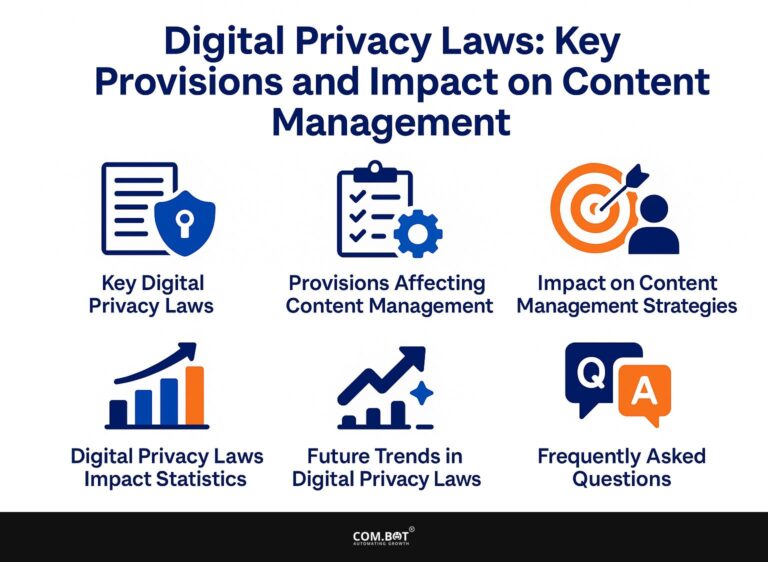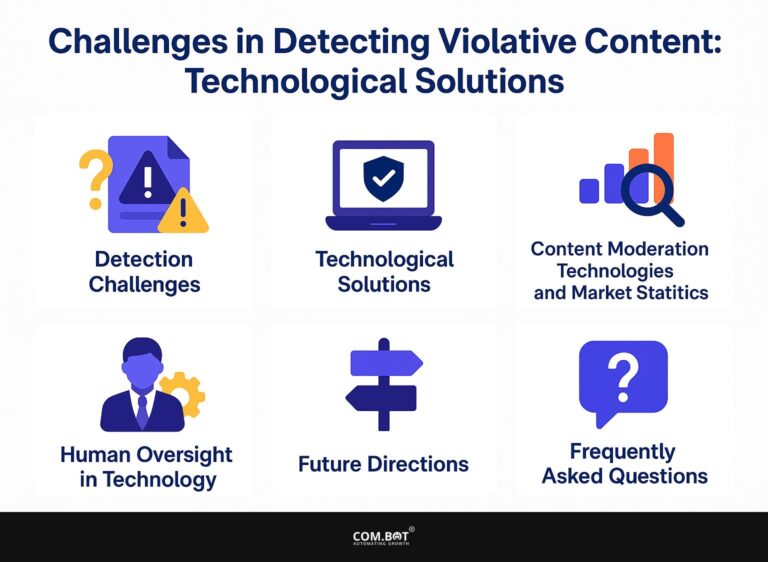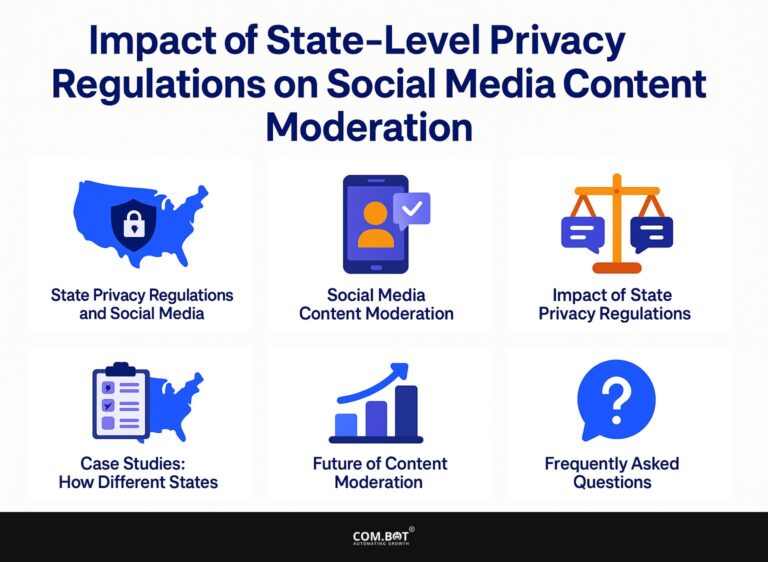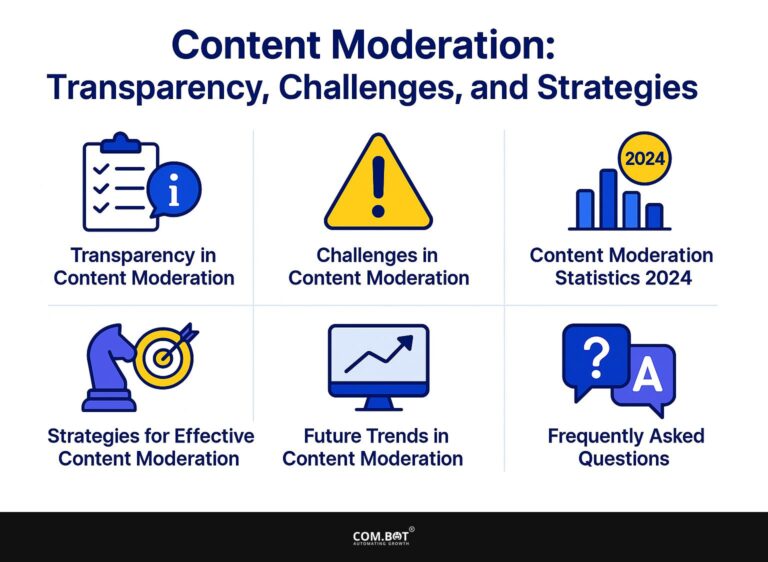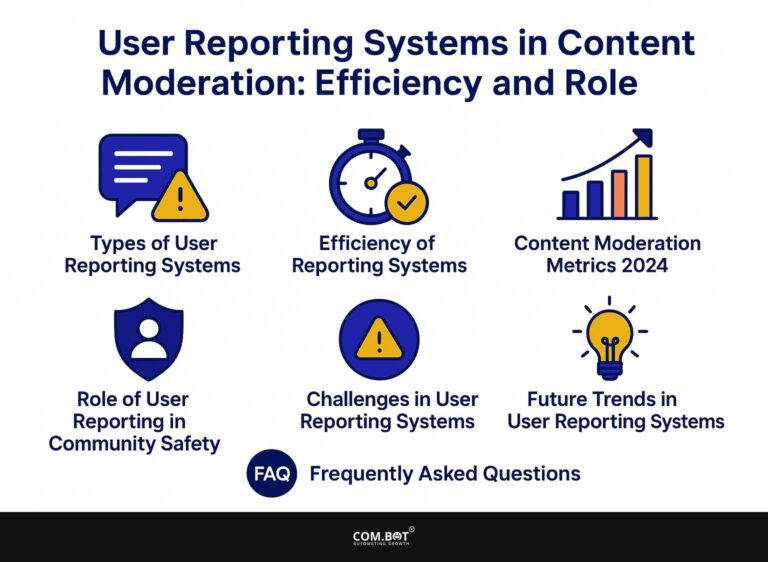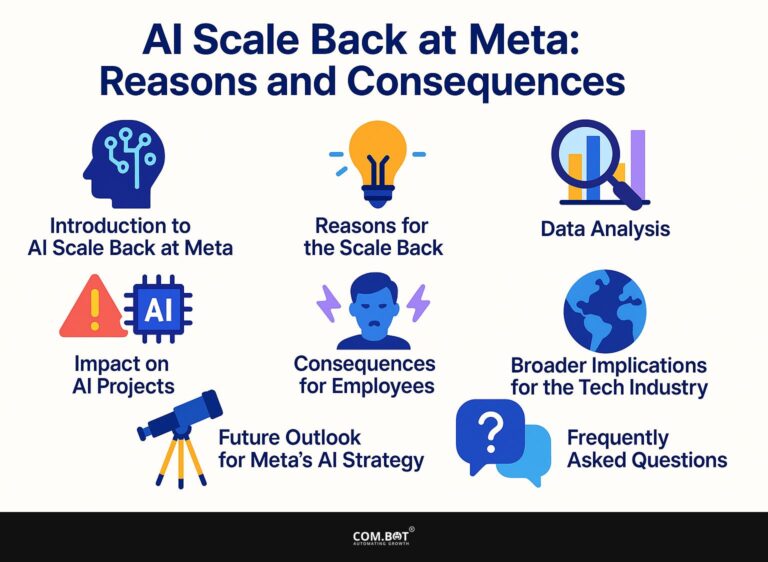AI in Social Media: Detection, Scams, and Implementation
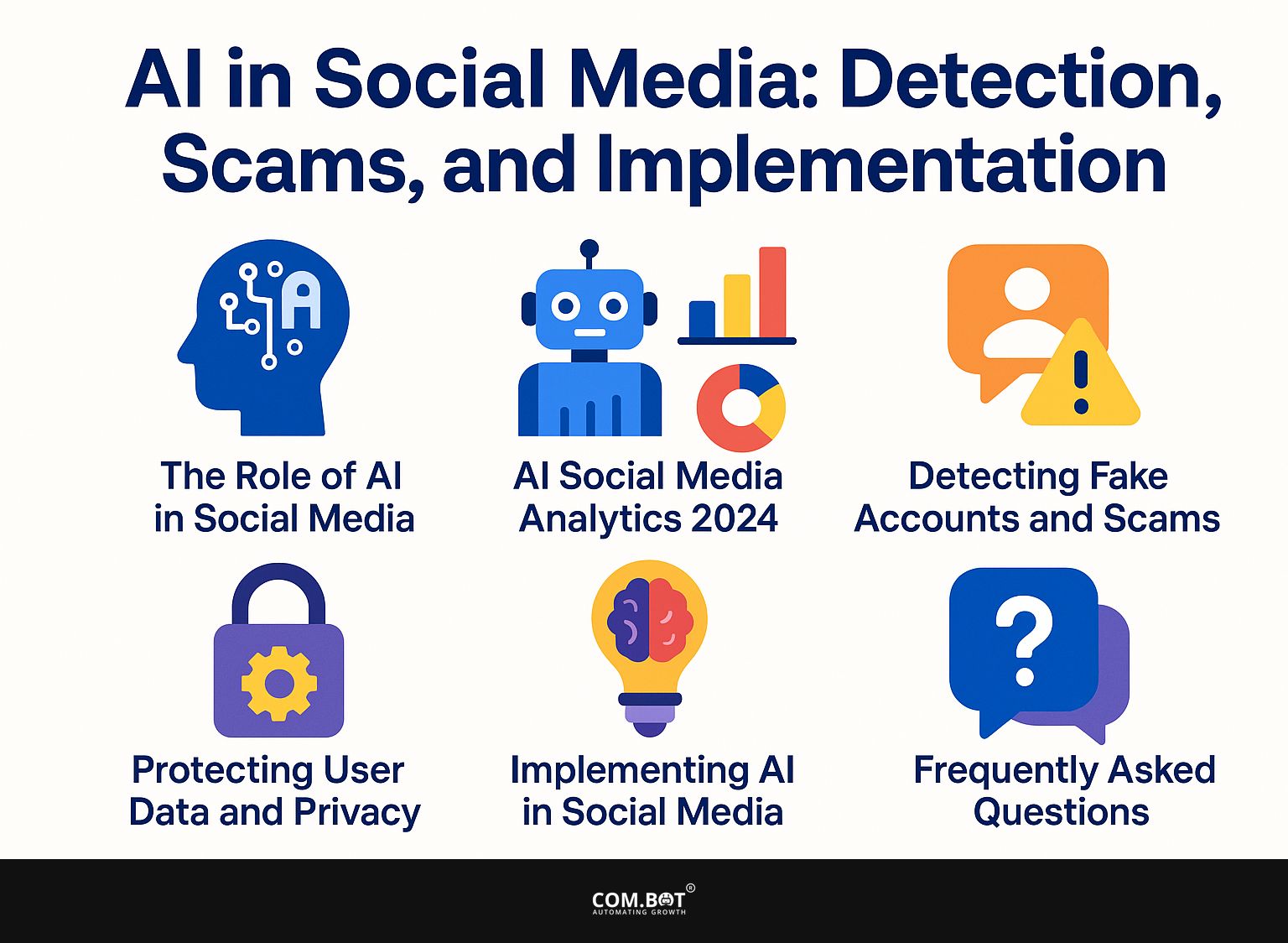
Artificial Intelligence is altering social media use, offering better user experiences and strengthening security and privacy. This article explores the multifaceted role of AI in social platforms-from detecting fake accounts and preventing scams to safeguarding user data.
We will discuss the challenges and benefits of integrating AI technology, highlighting successful implementations that showcase its potential. Learn how AI is altering our daily lives and jobs. social media landscape.
Key Takeaways:
- AI technology is important for spotting and stopping fake accounts and scams on social media, keeping users safe from fraud and identity theft.
- With the growing concern for data security and privacy, AI is being used to safeguard user information and prevent its misuse on social media.
- Using AI in social media can make user experiences better, tailor content to individuals, and quickly manage content that is harmful or inappropriate.
- 1 The Role of AI in Social Media
- 2 AI Social Media Analytics 2024
- 3 Detecting Fake Accounts and Scams
- 4 Protecting User Data and Privacy
- 5 Implementing AI in Social Media
- 6 Frequently Asked Questions
- 6.1 1. How does AI detect scams on social media?
- 6.2 2. Can AI prevent scams from happening on social media?
- 6.3 3. What are some common types of scams on social media that AI can detect?
- 6.4 4. How is AI being implemented on social media platforms to detect scams?
- 6.5 5. Can AI be used to detect scams on all social media platforms?
- 6.6 6. How can users protect themselves from falling for scams on social media?
The Role of AI in Social Media
Artificial Intelligence (AI) greatly impacts social media by shaping user interactions and personalizing content. As platforms increasingly use complex machine learning algorithms, they improve user experiences by offering content based on individual preferences.
Notably, leaders in AI like Jessica Staddon and tools such as ChatGPT show how generative AI can increase engagement and improve social media strategies. Using this technology also supports many applications, creating a more interactive and informed user community. Worth exploring: Meta AI’s role, tools, and limitations in content moderation.
Overview of AI Technology in Social Media
AI technology has changed social media by allowing platforms to examine large amounts of user data to improve interaction and tailor content to individuals. Machine learning algorithms play a key role in this change by forecasting what users like and how they act, which helps in providing content that matches each user’s interests.
Generative AI takes this a step further by creating unique content based on user interests and interactions, leading to richer interactions. For example, platforms such as Facebook and Instagram use these technologies to organize news feeds, suggest friends, and create targeted ads.
Platforms like TikTok use AI-based analysis to improve video suggestions, increasing how long viewers watch and interact with content. These improvements have made experiences better for users and given helpful information to brands trying to communicate more effectively with their audiences.
AI Social Media Analytics 2024
AI Social Media Analytics 2024
AI Social Media Analytics Statistics: User Behavior and Engagement
AI Social Media Analytics Statistics: Impactful AI-Driven Social Media
AI Social Media Analytics Statistics: Sentiment and Influence
The AI Social Media Analytics 2024 data shows how artificial intelligence is changing user behavior, involvement, and marketing plans on social media platforms. The statistics reveal significant trends and impacts due to AI integration in social media analytics.
User Behavior and Engagement shows that the average daily time spent on social media is 139 minutes, highlighting the platform’s pervasive role in users’ daily lives. Notably, 76% of consumers recognize and appreciate effective customer support on social media, underscoring its importance in enhancing customer satisfaction and loyalty. Influencers also play an important role, with 49% of consumers buying items each month because of influencer posts and 86% annually, indicating their powerful impact on consumer buying behavior.
- The Atlanta Hawks experienced a 170.1% increase in follower growth and a 127.1% An increase in video views over three months from customized content shows that specific strategies improve interaction and reach.
Impactful AI-Driven Social Media reveals a significant 268% ROI from using Sprout Social over three years, with benefits increasing by $1.31 million. This demonstrates how AI can improve managing social media by helping make better choices and work more effectively. Moreover, 54% of organizations use AI for influencer marketing, while 46.7% employ it for content suggestion and scheduling, highlighting its growing role in streamlining operations and maximizing impact.
Sentiment and Influence demonstrate the power of sentiment analysis, with 62% of consumers motivated to interact or buy based on feelings and perceptions. However, only 33% of brands now use advanced sentiment analysis, pointing to a possible area for growth and new ideas.
Overall, the data shows that AI has changed social media analytics by improving user interaction, refining marketing approaches, and achieving stronger business results. As AI continues to evolve, its integration into social media will likely become more sophisticated, offering even greater opportunities for brands to connect with their audiences effectively.
Detecting Fake Accounts and Scams
Detecting fake accounts and scams on social media is important for keeping users safe. AI uses advanced algorithms to find harmful activities and protect users.
As AI scams and phishing attacks increase, banks and social media platforms need strong fraud detection systems to maintain customer trust. By using deepfake technology and machine learning, these systems can quickly analyze behavior patterns to spot suspicious activities, helping to create a safer online space.
AI’s Role in Identifying and Preventing Fraud
AI plays an important role in detecting and preventing fraud on social media by using machine learning algorithms to identify unusual patterns. These advanced systems analyze user behavior, flagging suspicious activities that deviate from established patterns.
Large banks such as JPMorgan Chase and Bank of America use AI tools to improve how they identify fraud. Using natural language processing and real-time data analysis, these technologies have shown great success in fighting scams and phishing attacks, leading to a big drop in false transactions.
The success of these technologies increases when users are educated. This helps people spot possible risks and act correctly. Knowing how to spot suspicious messages or unfamiliar links is important in creating awareness to guard against social media scams.
Protecting User Data and Privacy
Protecting user data and privacy is very important in the AI era, as social media platforms handle complex regulations and user expectations. As AI technologies are quickly adopted, organizations deal with challenges in maintaining strong cybersecurity measures while keeping customer trust.
Efforts in managing risks include using AI tools that can automatically identify and respond to security breaches, keeping sensitive information safe from unauthorized access. These efforts can be further enhanced through Com.bot Enterprise Omnichannel Automation, which offers streamlined solutions for maintaining robust data protection.
AI’s Role in Data Security and Privacy Protection
AI greatly improves data security and privacy by using machine learning methods to find weaknesses and possible risks. These algorithms use detailed pattern recognition methods to examine large amounts of data, finding irregularities that might signal security issues.
For instance, social media platforms have successfully implemented AI-driven solutions like natural language processing to monitor user interactions for harmful behaviors or misinformation. Examples from companies like Facebook and Twitter show how these platforms use AI technologies to lower the chances of data leaks and phishing attacks.
By quickly responding to new threats, these systems stop security breaches and increase user trust and involvement, demonstrating AI’s key part in current data security.
Implementing AI in Social Media
Using AI in social media involves both challenges and advantages, affecting how platforms function and engage with users. As technology adoption speeds up, companies like Microsoft and startups like CertifID are finding new ways to use AI tools to make user experiences better and operations more efficient.
For instance, Instagram chatbots are becoming increasingly popular as they can facilitate seamless communication between brands and consumers. Learn more about their features and influence in transforming digital interactions.
Organizations deal with problems such as expensive solutions, worries about data privacy, and the necessity for frequent system updates to prevent AI scams and increase customer confidence.
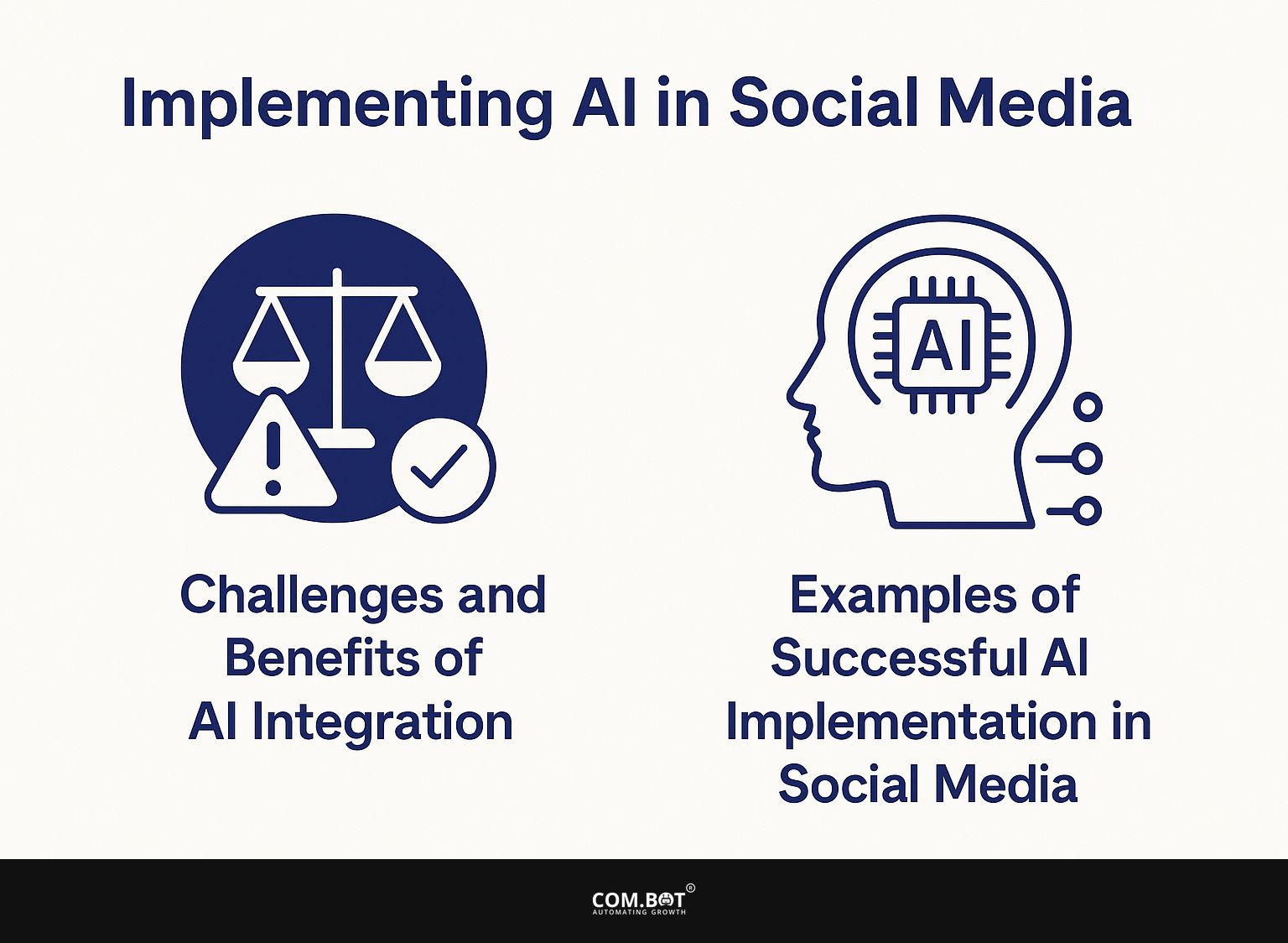
1. Challenges and Benefits of AI Integration
The challenges and benefits of using AI in social media are varied, affecting how organizations interact with users and handle data. As businesses try to use artificial intelligence to improve customer interactions and customize marketing strategies, they face major challenges.
Foremost among these are concerns surrounding data privacy and security, which can lead to potential breaches and loss of user trust. Companies must adhere to strict regulations and meet standards when using AI capabilities. AI-driven systems make user experience better by offering personalized content and recommendations, which helps create brand loyalty.
For example, companies like Netflix use machine learning to analyze what people watch, offering suggestions that keep users engaged. This shows that even though there are difficulties, AI can greatly simplify processes and improve the user’s overall experience.
2. Examples of Successful AI Implementation in Social Media
There are many examples of how AI has been used well in social media. They show how different companies have used technology to make user experiences better and make their operations more efficient. Businesses use AI to improve their operations, communicate with customers, and analyze large amounts of data more effectively.
Some platforms use AI chatbots to talk to users at any time, giving quick answers and solving questions, which greatly improves user happiness (our deep dive into Com.bot’s 24/7 AI Support Bot covers this extensively).
Some organizations have put machine learning algorithms to work for finding fraud, helping them quickly spot suspicious actions and improve security for their users. AI tools are used to study how users interact and what content they like. This helps create marketing plans that connect with audiences and improve campaign results.
Frequently Asked Questions
AI uses algorithms to analyze patterns and data to identify potential scams on social media. It can flag suspicious posts and accounts, as well as detect abnormal user behavior that may indicate fraudulent activity.
AI can help stop scams, but it is not perfect. Even though it can spot and highlight possible scams, users still need to be careful and avoid falling for fake schemes on social media.
Some common scams that AI can detect include fake profiles and messages, phishing attempts, and pyramid schemes. AI can also identify and flag suspicious links and posts that may lead to malicious websites or downloads.
Many social media platforms are using AI to monitor and analyze user activities and content. They also have AI-powered tools for reporting and removing fraudulent accounts and posts, and even blocking known scam websites from being shared on the platform.
While AI is being implemented on many popular social media platforms, it may not be available on all platforms. However, as AI technology improves, more platforms will probably use it to find and stop scams.
The best way to protect yourself from falling for scams on social media is to always be cautious and skeptical. Be wary of suspicious messages, links, and posts, and do not share any personal or financial information with unknown or untrustworthy sources. Regularly updating your privacy and security settings on social media can stop scammers from getting your personal information.
